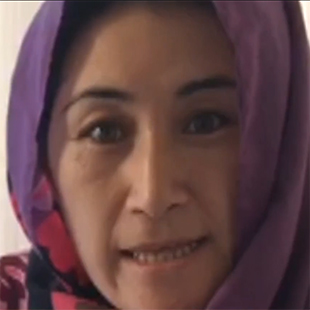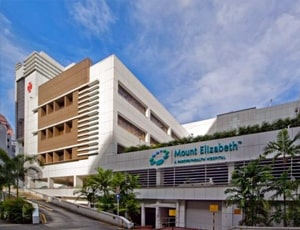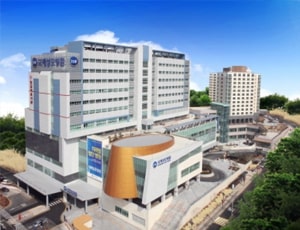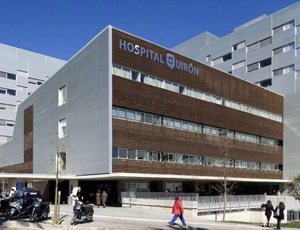The nasal septum is the wall present in the nose which separates the nasal cavity into the right and left cavities. The nasal septum is made of cartilage in the anterior region and bone in the posterior region. Though a slight deviation in the septum is normal finding, a greater extent of deviation in the septum results in soecific deviated septum symptoms by blocking a side of the nose causing breathing difficulties due to reduced airflow. Septoplasty is the surgical procedure which helps in straightening the deviated nasal septum. While performing septoplasty surgery, the surgeon may trim (cut and remove parts of septum), reposition (placing in the middle of the nose) and replace cartilage, bone or both. Deviated septum symptoms such as breathing difficulty, physical structure and features of the nose are taken into consideration before planning septoplasty.
The surgeon may recommend discontinuing certain medications such as aspirin, ibuprofen, and other blood thinners two weeks before the surgery as these medications may increase the risk of excessive bleeding during and after the procedure.
The surgeon will take pictures of the nose before and after the surgery. Comparing these pictures helps to understand the surgical changes made in the nose. Pre-operative surgical preparation for general anesthesia may include abstinence from eating and drinking in the night before the septoplasty surgery to reduce the risk of aspiration.
A septoplasty is carried under local or general anesthesia. The type of anesthesia used and the duration of the surgery depend on the complexity of the condition. The surgical procedure usually takes 30 to 90 minutes to complete.
The typical procedure is carried out in 4 steps;
Step 1: The surgeon will make an incision on one side of the nose to access the septum. The mucous membrane (the protective covering of the septum) is lifted from the septum on one side.
Step 2: An incision is made on the septum in front of the nasal deviation and the nasal mucosal lining is lifted away from the septum on the other side.
Step 3: Then, the deviated septum will be moved into the midline position. Barriers such as extra pieces of bone or cartilage, will be removed.
Step 4: The last step is the repositioning of the mucous membrane. This is carried out by various methods. One method is suturing the membrane and septum to hold them in place. However, packing the nose with cotton is sometimes enough to keep them in position.
Septoplasty is performed on an outpatient basis; therefore, the patient may be discharged on the same day after the anesthetic affect is worn off.
To promote healing and minimize swelling, physical activity should be limited for several weeks post surgery. Physical activities can increase blood pressure and lead to heavy nasal bleeding.
Tips for a quicker recovery include:
Cartilage and other nasal tissues may take up to a year to fully settle into their new shape. Breathing will improve shortly after the procedure. The wound can be healed quickly.
Risks associated with surgery


Singapore, Singapore
Mount Elizabeth Hospital is a multispecialty healthcare facility operated by Parkway Health. The hos...more
![]() Private Rooms
Private Rooms
![]() Translator
Translator
![]() Nursery / Nanny Services
Nursery / Nanny Services
![]() Airport Pick up
Airport Pick up

Seoul, South Korea
Catholic kwandong university international St Mary hospital is one of its kind hospitals in Korea. I...more
![]() Post operative followup
Post operative followup
![]() Airport Pick up
Airport Pick up
![]() Online Doctor Consultation
Online Doctor Consultation
![]() Free Wifi
Free Wifi

Barcelona, Spain
Quironsalud Barcelona Hospital is built at a very convenient location in Barcelona. The hospital is ...more
![]() Accommodation
Accommodation
![]() Airport Transfer
Airport Transfer
![]() Choice of Meals
Choice of Meals
![]() Interpreter
Interpreter

ENT Specialist
Izmir, Turkey
13 of experience
USD 125 for video consultation

ENT Specialist
Istanbul, Turkey
11 of experience
USD 150 for video consultation

ENT Specialist
Izmir, Turkey
28 of experience
USD 150 for video consultation

ENT Surgeon
Delhi, India
26 Years of experience
USD 32 for video consultation
Q: Can I take a shower after septoplasty?
A: You are advised not to take a shower or a bath for at least 24 hours after the procedure. Take help from a nurse to understand how to clean the nose area.
Q: How long do I have to sleep elevated after septoplasty?
A: You should sleep on elevated pillows for at least three to four days after the procedure. You can maintain the elevation by placing your head on two or more pillows.
Q: Can septoplasty cure snoring?
A: Nasal surgery can help improve snoring, however, it is not a solution for obstructive sleep apnea. Septoplasty should not be conducted solely for the purpose of snoring relief.
Q: When can I start working out after snoring surgery?
A: Some patients are able to resume back to light activities and exercises after a week of the surgery. However, you must seek approval from your surgeon before resuming your normal routine.
Q: How long will my nose bleed after septoplasty?
A: Your nose may bleed a little for at least two to three days after the surgery. Additionally, the swelling may persist for at least two to three days.